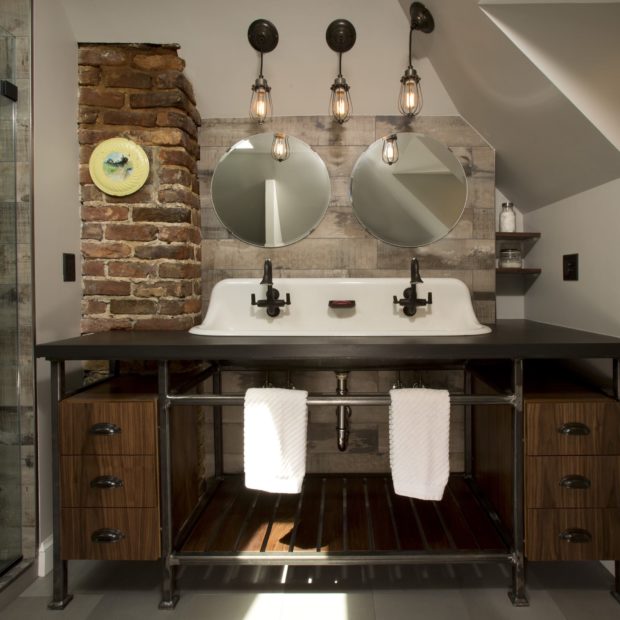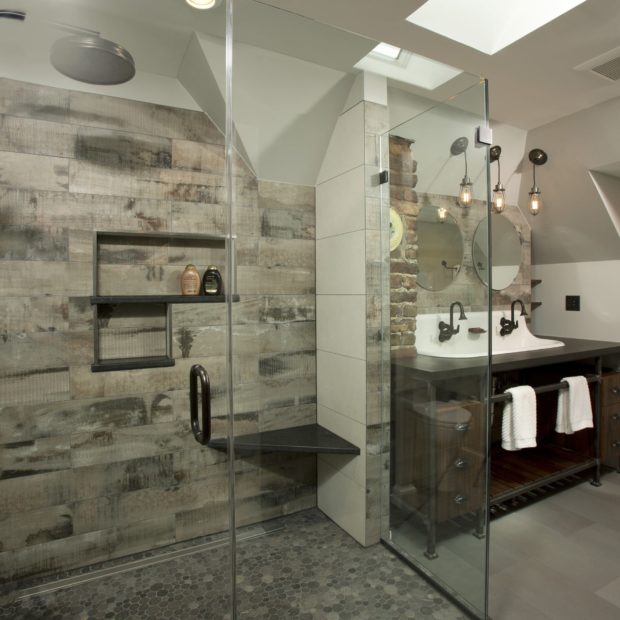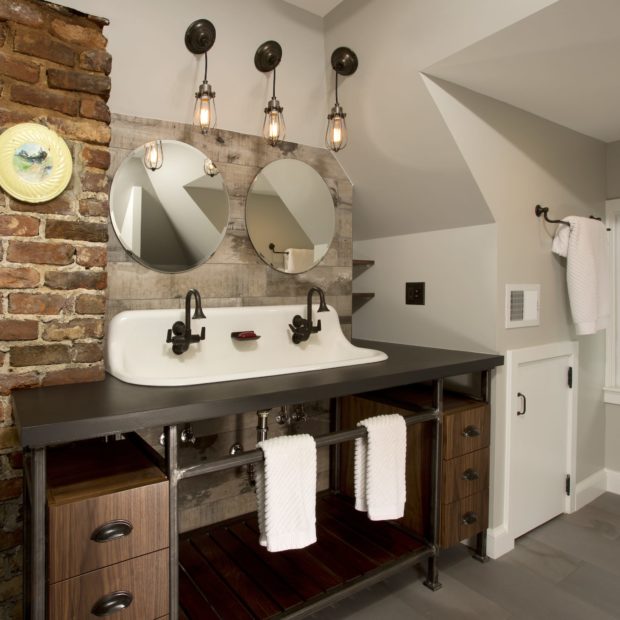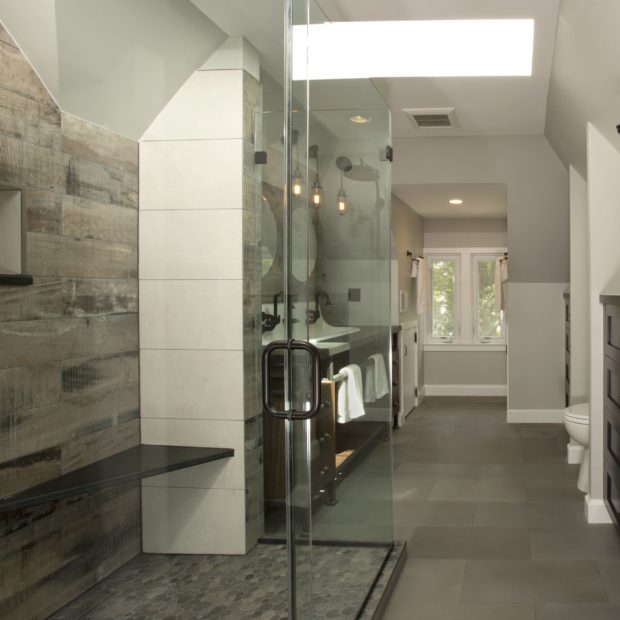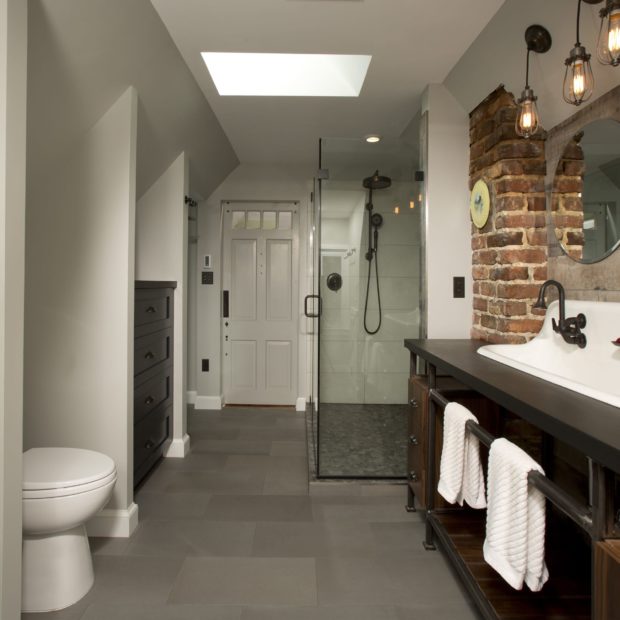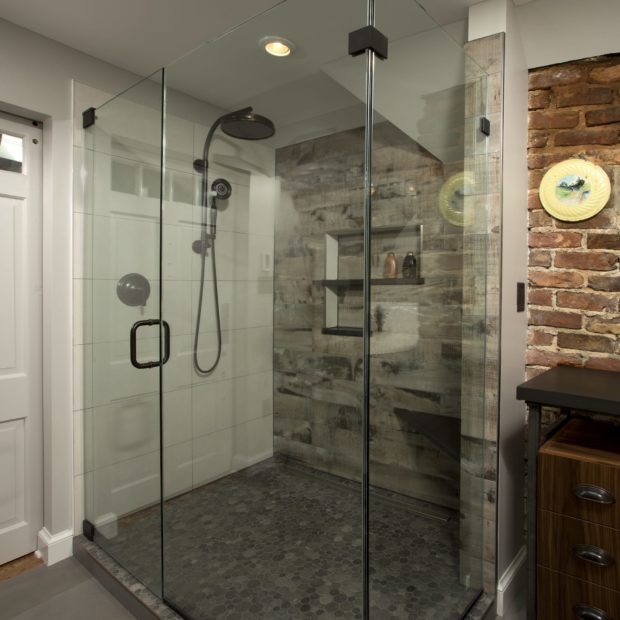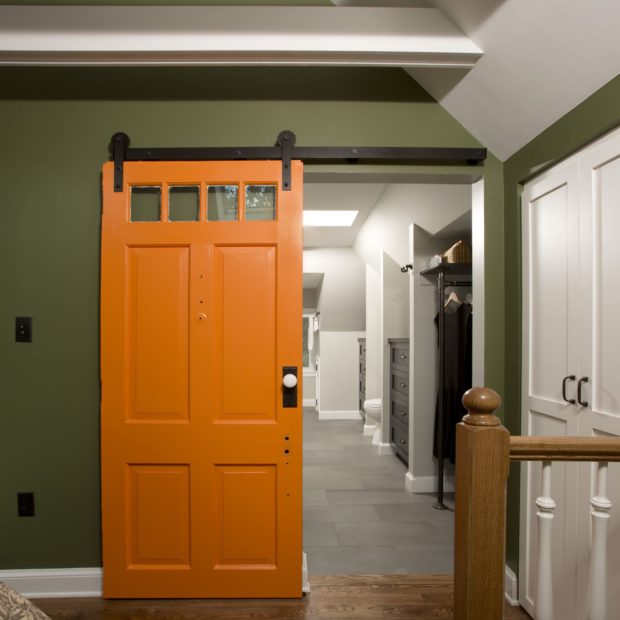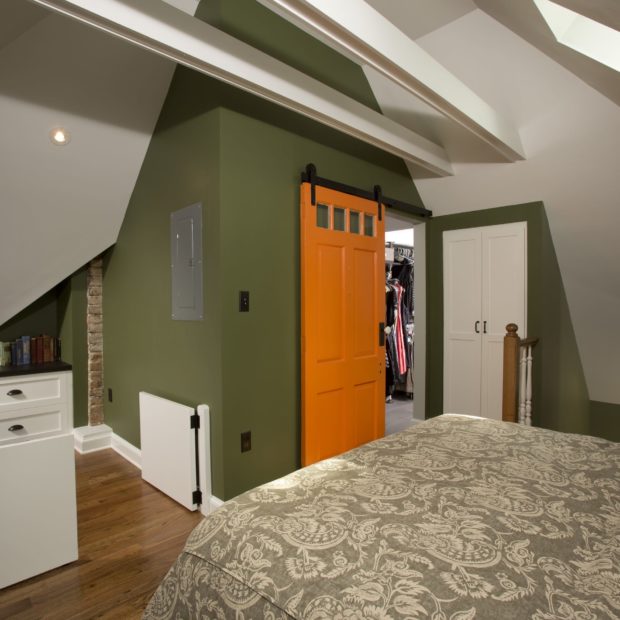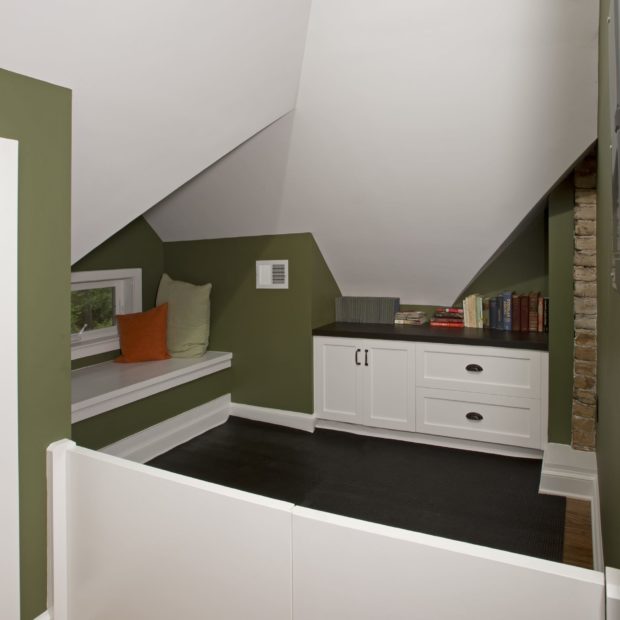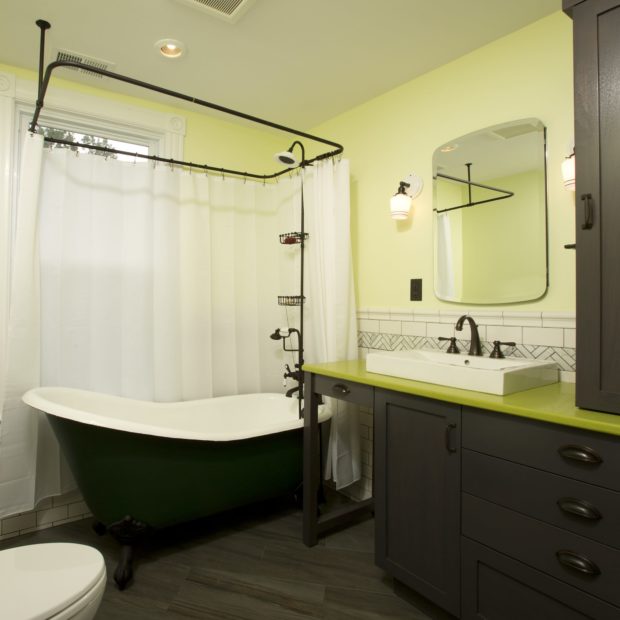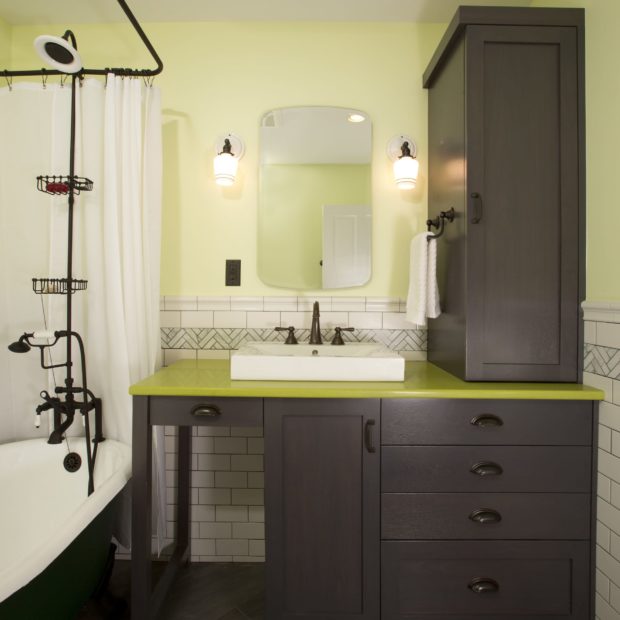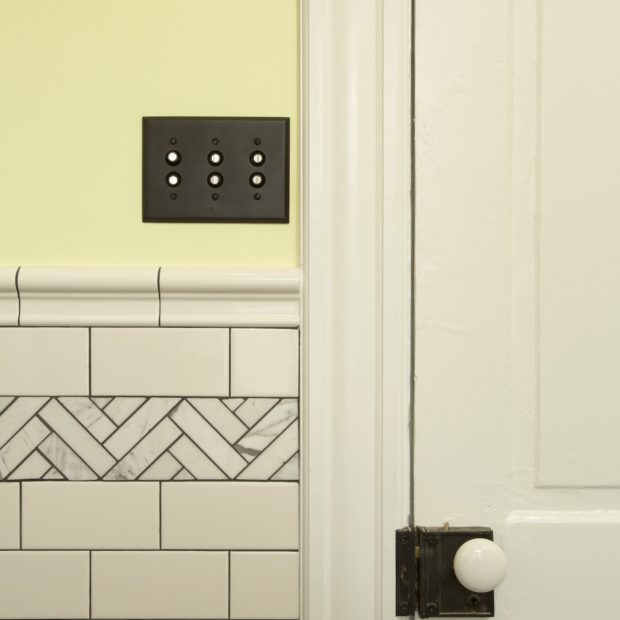Master Suite and Attic Renovation in Washington, DC
Project Overview
We live in an older Washington DC home (100+ years) and wanted to add a master bathroom suite, and remodel our attic. We were introduced first to this family in 2012 when we designed and remodeled their kitchen. They were so happy with the process and final product, that two years later they called us back to convert their semi-finished attic into a master suite. Their house is large, but as is typical in many 100-plus year old homes, there was only one full bathroom (on the second floor), and a powder bath that had been added on the first floor. In addition to the third floor master suite, we were tasked with gutting and remodeling the second floor bathroom, adding central air throughout the home, and reworking the laundry room on the first floor.
Design and Layout
Our clients had very clear ideas for the elements to be included in the design of the new master suite: a spacious bathroom to include two faucets, built-in storage, a large walk-in shower and some privacy at the commode. It was important to maximize clothing storage (both hanging and concealed), and adding natural light was imperative. Finally, there needed to be a designated sitting area that could double as a secure home for two pet ferrets. Looking at the attic floor plan on paper, the space appeared large, but our project architect quickly realized that the floor plans were deceiving. The converging roof angles and required height clearances for living space posed a challenge to incorporating all the clients’ requests. After presenting several options, we settled on the floor plan with the largest bathroom, to include an open closet at an existing dormer. The ceiling throughout the master suite was vaulted to open the space, skylights were added in the bathroom and above the bed, and storage carved out of every space available. At the second floor bathroom, the tub was turned to sit under an existing window, the commode moved to the opposite side of the room, and a vanity with storage above the countertop installed.
Style and Finishes
Just as it had been during the kitchen renovation, selecting fixtures and finishes was an exciting prospect. Much as in the kitchen design, the homeowners wanted the aesthetic of the second floor bathroom to honor the period in which the home was built. Selections included subway tile with a traditional chair-rail cap and marble herring bone accent strip, oil-rubbed bronze fixtures, a claw-foot tub, push-button light switches and dark wooden cabinetry. The custom green finish on the tub and Apple Martini Caesarstone countertop add a touch of fun. The master suite is separated from the rest of the home, which presented some flexibility to deviate from the traditional theme of the floors below. The starting point was a Brockway sink from Kohler, which was mounted on a custom steel vanity. Since none of the faucets compatible with this particular sink are produced with an oil-rubbed bronze finish, we shipped the chrome faucets to California to be custom plated – consistency between the shower and sink fixtures was important. A combination of wood grain and white porcelain tile were installed in the shower, along with a sleek linear drain. Paperstone countertops were used for the cabinetry and bathroom vanity, with matching honed granite for the shower bench and niches. Lighting was important, so a combination of recessed and pendants were included in the design, along with accent lighting that was installed on top of the decorative beams in the bedroom. The orange accent paint on the bathroom door (rescued from a local salvage yard), makes the master suite “pop” when you walk up the stairs.
Construction and Final Product
Due to the magnitude of this project, every square foot of the home was affected. Ducting from the air handler in the attic had to be run to each room, and the plumbing supply and waste lines from the basement up, had to be replaced. Early in the design process we began discussing the construction process with the homeowner. We suggested that they move out of the home for a three week period, two weeks into the project. They obliged, which gave us the opportunity to perform almost all of the work that was not confined to the attic while they were away, including the full second floor bathroom. Additionally during this period, we insulated the attic with spray foam, which requires a 24-hour move-out period after installation. When the homeowners moved back in, they not only had a cool home (previously there was no central air), but our construction activities were contained largely to the third floor. The construction phase ran a few days over schedule, but the clients were pleased with the process and thrilled with the end result.
